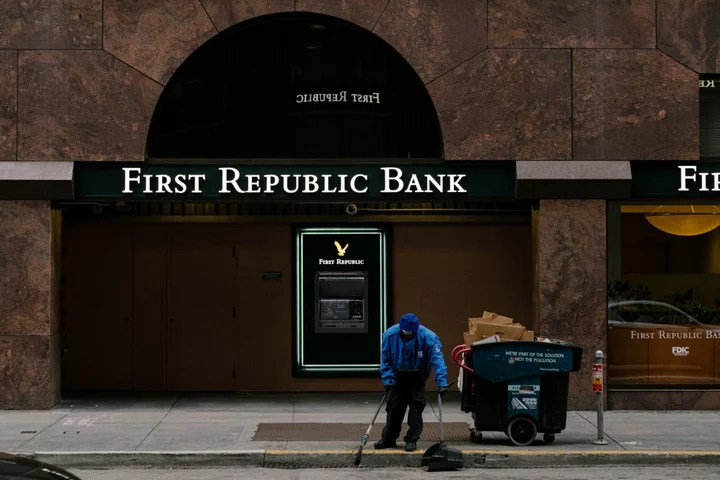US loans and deposits fell slightly in the chaotic first week of May when First Republic Bank collapsed — marking the nation’s second-largest bank failure — and was acquired by JPMorgan Chase & Co.
Commercial bank lending fell $15.7 billion in the week ended May 3 after increasing $41.9 billion in the prior week, according to seasonally adjusted data from the Federal Reserve out Friday. However, on an unadjusted basis, loans and leases were up slightly.
Deposits also declined on a seasonally adjusted basis, though without adjustment deposits rose $67.3 billion.
Economists and policymakers are closely monitoring a range of data to assess lending conditions and the overall stability of the financial sector in the wake of several regional bank failures. Known as the H.8, this report provides an estimated weekly aggregate balance sheet for all commercial banks in the US.
That said, the divergence between the adjusted and unadjusted data makes it difficult to draw conclusions about the latest report’s moves.
A separate Fed report out earlier this week showed nearly half of US banks tightened terms on commercial and industrial loans for medium and large businesses in the first quarter, extending a trend that began before recent stresses in the banking sector emerged.
The biggest 25 domestic banks account for almost three-fifths of lending, although in some key areas — including commercial real estate — smaller banks are the most important providers of credit. This report is primarily based on data reported weekly by a sample of about 875 domestically chartered banks and foreign-related institutions.
- For a list of banks which have failed since Oct. 1, 2000, click here
- For a list of commercial banks ranked by assets, click here
--With assistance from Vince Golle.

